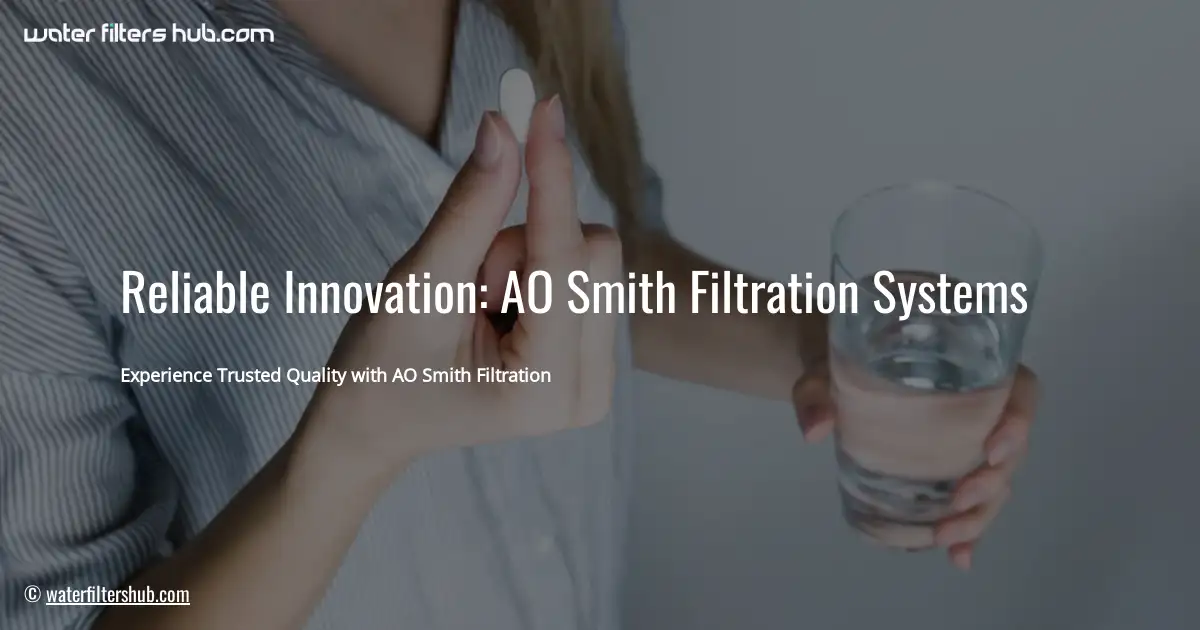Establishing a Replacement Schedule for Filters
Introduction
Importance of Clean Water and Water Filters
“Water is the elixir of life,” they say, and it’s true! Clean water is essential for our health, well-being, and overall quality of life. Water filters play a crucial role in removing impurities, contaminants, and harmful substances from our water supply, ensuring we have access to safe and healthy drinking water. 💧
Different types of water filters are available, each with its unique maintenance requirements. Understanding these requirements is vital to ensure your filter is functioning optimally and providing you with the cleanest water possible.
Factors Affecting Filter Lifespan
Water Quality and Usage
The lifespan of your filter is heavily influenced by the quality of the water you’re filtering. If your water is particularly dirty or contains high levels of sediment, your filter will need to work harder and will likely need to be replaced more frequently. Similarly, if you use a lot of water, your filter will need to be replaced more often than if you use less.
Type of Filter and Its Capacity
Different types of filters have different lifespans. For example, activated carbon filters typically last for 6-12 months, while reverse osmosis filters can last for 2-5 years. The capacity of the filter also affects its lifespan. A filter with a larger capacity will be able to filter more water before it needs to be replaced.
Environmental Conditions
The environmental conditions in which your filter is used can also affect its lifespan. For example, if your filter is exposed to high temperatures or humidity, it may need to be replaced more frequently.
Recommended Replacement Frequency
Manufacturers typically provide specific replacement guidelines for their filters based on factors like filter type, capacity, and water quality. These recommendations are crucial to ensure optimal performance and water quality. By following the manufacturer’s instructions, you can avoid premature filter failure or the risk of contaminated water. Remember, “An ounce of prevention is worth a pound of cure!” 💰
Signs Your Filter Needs Changing
“If your water suddenly starts smelling or tasting funky, it’s a sure sign your filter needs a change! 🤢 It’s like when you forget about the leftovers in your fridge – the longer they stay there, the funkier they get. Your water filter is no different. It traps impurities and contaminants over time, and if you don’t change it regularly, those nasties start to build up and release unpleasant odors and tastes into your water. So, if your water starts tasting like a swamp, don’t hesitate – replace that filter!”
Consequences of Not Changing Filters
Health Risks from Contaminated Water
Neglecting to change your water filter can have dire consequences for your health. Contaminated water can harbor harmful bacteria, viruses, and parasites that can cause a range of illnesses, from mild stomach upsets to life-threatening infections. 🤒 Think of it as a ticking time bomb, waiting to unleash a torrent of sickness upon your unsuspecting body.
Damage to Appliances and Plumbing
Clogged filters can also wreak havoc on your appliances and plumbing. When water can’t flow freely through the filter, it can build up pressure, damaging your refrigerator, dishwasher, or washing machine. It’s like trying to force a square peg into a round hole – eventually, something’s gonna give. 🔧
HOW OFTEN WATER FILTER CHANGE ON YOUTUBE
DIY Filter Replacement Instructions
Replacing a pitcher filter is a breeze! Simply remove the old filter from the pitcher and discard it. Then, take the new filter out of its packaging and rinse it under cold water for about 15 seconds. This will help remove any loose carbon particles. Finally, insert the new filter into the pitcher and fill it with water. Let the water run through the filter for a few minutes before drinking it.
Here’s a step-by-step guide to make it even easier:
- Remove the old filter: Grasp the old filter and pull it straight up out of the pitcher.
- Rinse the new filter: Hold the new filter under cold running water for 15 seconds.
- Insert the new filter: Push the new filter straight down into the pitcher until it clicks into place.
- Fill the pitcher with water: Fill the pitcher with cold water and let it run through the filter for a few minutes before drinking it.
Remember: It’s important to replace your pitcher filter every 2-3 months, or more often if you notice a decrease in water flow or a change in taste or odor.
Regular maintenance of your water filter is crucial for maintaining the health of your family and the efficiency of your appliances. Just like a car needs regular oil changes, your water filter needs to be replaced periodically to ensure it’s effectively removing impurities from your water. Neglecting filter maintenance can lead to a buildup of contaminants, compromising the quality of your water and potentially causing health issues. It’s like leaving the air filter in your car unchanged for months – your engine will suffer, and so will your health if you drink contaminated water.
Additional Tips for Filter Care 💦
When installing a brand-new water filter, it’s crucial to give it a good flush before you start using it. This helps remove any loose particles or impurities that might have accumulated during manufacturing or storage. Simply run water through the filter for a few minutes until it runs clear. It’s like giving your filter a fresh start to ensure it delivers pure, clean water from day one. 💧
FAQs
🤔 Ever wondered about the nitty-gritty of water filter maintenance? Here are some burning questions that’ll quench your thirst for knowledge:
- How often should I replace my water filter?
-
This depends on the type of filter, water quality, and usage. Check the manufacturer’s recommendations or refer to our handy guide in Section 3.
-
What are the signs that my filter needs changing?
-
Reduced water flow, discolored water, strange odors, or tastes are all telltale signs. Don’t ignore these signals!
-
What happens if I don’t change my filter?
-
Contaminated water can lead to health risks, damage appliances, and compromise water quality. It’s like leaving a dirty air filter in your AC – not a good idea!
-
How do I replace a water filter?
-
Check out our step-by-step instructions in Section 6. It’s as easy as changing a lightbulb (almost!).
-
How can I extend the lifespan of my filter?
- Flush new filters before use, clean filter housings regularly, and store filters properly. These simple steps can make a big difference.
Conclusion
Water filters are the guardians of our health and well-being. They stand as valiant protectors, tirelessly removing impurities and contaminants from our water, ensuring its purity. By adhering to a regular maintenance schedule, we empower these filters to perform their duties effectively, safeguarding our health and the integrity of our water supply.
“A stitch in time saves nine,” as the adage goes. Regular filter replacement is a small but significant investment that can prevent costly repairs or health issues down the road. Just as we take care of our cars with oil changes and tune-ups, our water filters deserve the same attention. By following the manufacturer’s recommendations and being mindful of the signs that indicate a filter change is due, we can ensure that our water remains clean, safe, and refreshing.
Remember, clean water is the lifeblood of our homes and our bodies. By maintaining our water filters, we are not only protecting our health but also investing in the future. Let us all strive to be responsible stewards of this precious resource, ensuring that every drop we consume is pure and invigorating.
CHOOSING HOME WATER FILTERS & OTHER WATER TREATMENT SYSTEMS | CDC
[PDF] ABOUT THE GE® RPWF WATER FILTER CARTRIDGE
HOW TO INSTALL WATER FILTER CARTRIDGE
HOW MAKE WATER FILTER AT HOME
HOW LONG DO BRITA WATER BOTTLE FILTERS LAST
HOW DO BERKEY WATER FILTERS WORK
WHAT WATER FILTERS ARE BEST







Leave a Reply